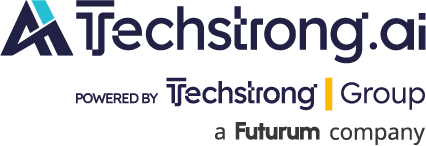
Top artificial intelligence (AI) companies intend to bring AI tools into American classrooms.
Anthropic, OpenAI, and Microsoft Corp. on Tuesday said they are teaming with the American Federation of Teachers (AFT), one of the nation’s largest teachers’ unions, to create a $23 million AI training center for educators. (On Wednesday, Microsoft considerably upped the ante with a pledge of more than $4 billion in cash and technology services to go to schools, community colleges, and nonprofits to train millions of people to use AI.)
“The direct connection between a teacher and their kids can never be replaced by new technologies, but if we learn how to harness it, set commonsense guardrails and put teachers in the driver’s seat, teaching and learning can be enhanced,” AFT President Randi Weingarten said in a release.
“When it comes to AI in schools, the question is whether it is being used to disrupt education for the benefit of students and teachers or at their expense,” Chris Lehane, chief global affairs officer of OpenAI, said in a statement. “We want this technology to be used by teachers for their benefit, by helping them to learn, to think and to create.”
The academy will offer free virtual training to all 1.8 million AFT members, starting with K-12 educators. The federation’s ultimate goal is to train 400,000 educators — about 10% of the U.S. teaching workforce — at the in-person facility over the next five years.
The training academy, which will start courses this fall at the United Federation of Teachers’ facility in Manhattan, will guide educators on the safe and ethical use of AI in their classrooms. AI experts and educators created the curriculum in the form of workshops, online courses and hands-on training sessions, according to AFT.
Financial commitments cover several years from Microsoft ($12.5 million) and OpenAI ($10 million). Anthropic will kick in $500,000 the first year, an AFT spokesman said. Funding will go toward additional training hubs throughout the U.S., set to open in 2030, AFT said. (The funding is a relative drop in the bucket compared to the billions of dollars companies are expected to spend on AI in the near future. OpenAI, SoftBank, and Oracle Corp. are part of a $500 billion Stargate project to build out AI infrastructure in the U.S. over the next four years, for instance.)
Despite concerns the program may amount to a lock-in of sorts for products from OpenAI, Microsoft, and Anthropic, educators were generally ecstatic about a Big Tech initiative designed to help them.
“I think this is a great idea. Educators are using these tools anyways many times without having increased AI literacy for how to use them,” Chris Mattmann, chief data and AI officer at UCLA, said in a message. “It is much different than a traditional search engine, teaching the educators and bringing them up to speed will balance the current imbalance that we have between those using AI in curriculum and those that aren’t.”
“AI will have a profound impact on all aspects of education, changing not only how we teach but also what we teach,” says Hadi Partovi, CEO of Code.org, a K–12 computer science nonprofit that has partnered with school districts, unions, and the White House to equip teachers with AI tools and training. “It’s critical for every teacher to have training in how to use modern AI technology, both to save teachers time, and to personalize student learning.”
The establishment of a national AI learning center for teachers comes amid growing concerns over the readiness of the U.S. workforce in the age of AI. Various studies and polls show a yawning gap between what management expects from human employees and the modest skills they have accumulated so far. The gap has fed into a growing narrative — and fear — of the technology and its impact on people’s livelihoods.
The situation may be even more pronounced within the U.S. education system, where studies show students are far more skilled than their teachers. While nearly two-thirds of American teens use AI tools like ChatGPT for school assignments, just 30% of teachers report feeling confident with the same tools, according to research from Statista.
For decades, the lack of STEM (science, technology, engineering, and mathematics) education in American schools has been a nagging concern in boardrooms as well as classrooms as the worldwide economy increasingly becomes more inextricably tied to technology, ideas, and thought leadership. If anything, AI has only turbocharged the debate and a sense of urgency to grasp the meaning of AI.
To that end, President Donald Trump in April signed an executive order establishing a White House Task Force on AI Education and called for public-private partnerships to provide resources for K-12 education about AI and its use in academia.
Prior to the order, OpenAI unveiled a partnership with the California State University system to bring its software to 500,000 students and faculty. Anthropic has also introduced Claude for Education, a version of its chatbot for higher education. Alphabet Inc.’s Google has struck deals to bring its AI tools to public schools and universities.
STEM educators said the idea of a national training center can’t come soon enough.
“As an educator in STEM at an independent school, I appreciate the density with which AI seems to permeate the educational lives and experiences of our students,” Bryan Jennewein, who teaches in Oakland, Calif., said in an email. “I think they’re growing up with AI tools much like I grew up with internet search tools. As an educator, I can appreciate the challenge and necessity of both understanding AI tools and integrating them into many parts of our pedagogies. I’ve found the tools to be a now indispensable part of my curriculum development and enhancement work, for example, but I’ve had to create that weaving of the tools into practice alone, and with few resources. There is so much potential for AI tools to transform the theories and practices of teaching in ways that beget even better learning outcomes for our students.”
Christopher Castle, a junior high school reading teacher in Phoenix, is all for the concept “as long as teachers are learning to use it for their use” in creating materials quickly and efficiently. “I think it’s great because these models aren’t going away and they are extremely useful,” he said. “But if they’re trying to use it as a way to put it in front of kids, then that’s not good.”
Added Lisa O’Masta, CEO of Learning.com, the leading K-8 digital literacy provider reaching more than 2 million students annually, “This kind of teacher-centered AI adoption is exactly what’s needed to build real fluency — putting educators in the driver’s seat as guides for critical thinking and responsible use. When teachers and students learn together, especially in under-resourced communities, we create the foundation for more equitable and effective AI integration in schools.”

